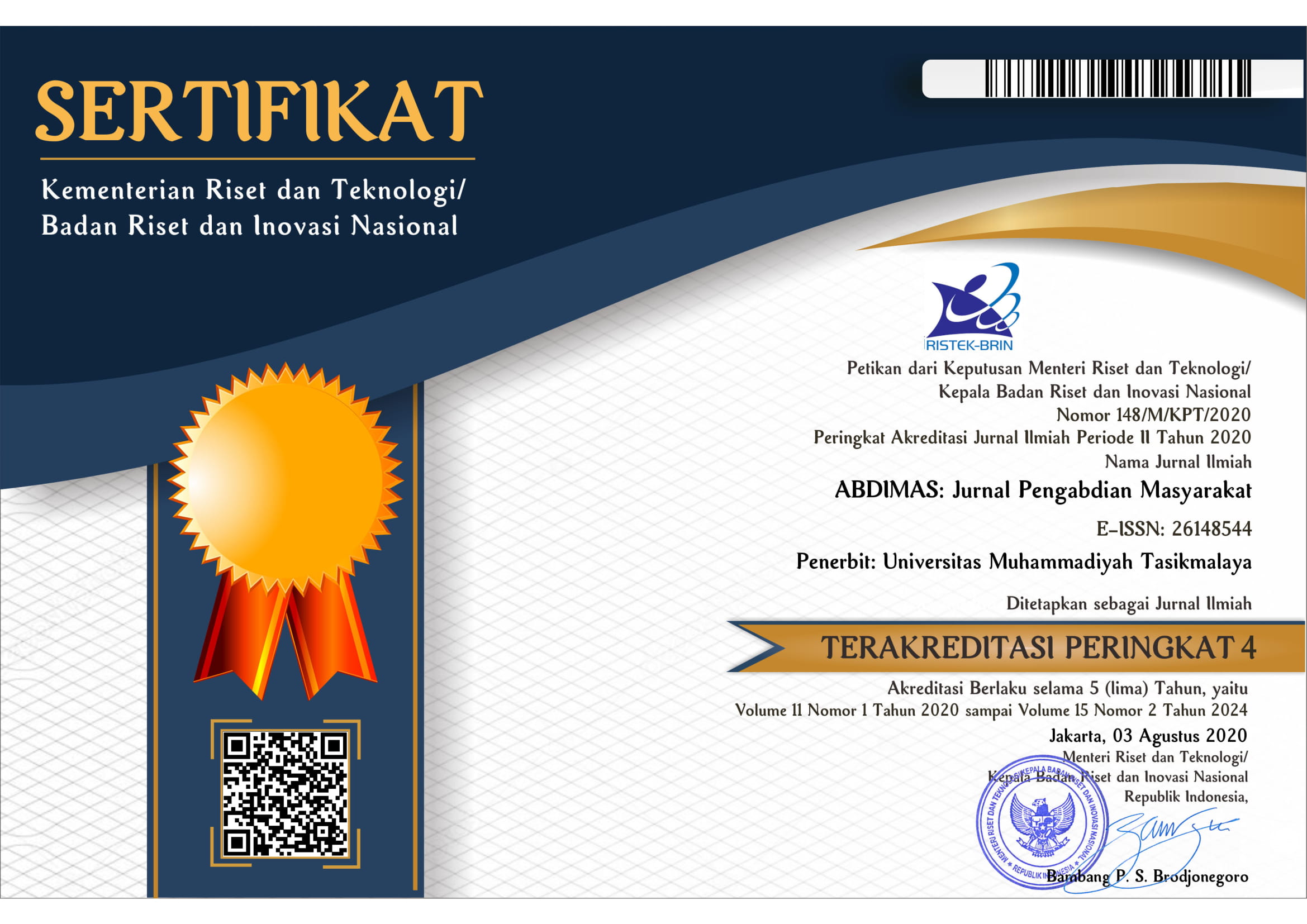Nutritional Fulfillment Counseling for Pregnant Women & Toddlers for Stunting Prevention in Babakan Village, Pangandaran
DOI:
https://doi.org/10.35568/abdimas.v7i3.4888Keywords:
Stunting, Nutrition, PangandaranAbstract
The prevalence rate of stunting in Indonesia is considered high at 27.5% on a national scale and 25.1% for West Java province. Stunting is a chronic malnutrition problem characterized by short stature. Stunting may be hereditary, but consumption patterns play a role as a risk factor for stunting. Knowledge about proper consumption patterns is known to prevent stunting. This includes conducting educational activities about nutritious feeding patterns in families.Nutritional fulfillment counseling for pregnant women and toddlers has been conducted for the community in Babakan Village, Pangandaran. Participants who took part in this activity were members of the Dewi Manik Integrated Health Post (Pos Yandu). In addition to counseling, questionnaires were also distributed to assess the community's level of knowledge about nutrition in the family. A total of 64 participants aged 20 to 35 years completed the questionnaire. From the results of questionnaires given before and after the counseling, it was found that participants' knowledge about nutrition for pregnant women and toddlers was already quite good, but it has not been well applied as there is still a stunting rate of about 25% among toddlers from the survey subjects.Several efforts, such as providing more interactive and specific counseling materials about stunting and independent nutritional fulfillment, as well as more detailed and regular information about disease impacts, can be carried out for residents to help increase their awareness to independently prevent stunting.
Downloads
References
Kementrian Kesehatan Republik Indonesia. (2011). Standar Antropometri Penilaian Status Gizi Anak. Direktorat Jendral Bina Gizi Dan Kesehatan Ibu Dan Anak.
Kementerian Kesehatan RI. (2011). Panduan Penyelenggaraan Pemberian 7 Makanan Tambahan Pemulihan Bagi Balita Gizi Kurang. Direktorat Jendral Bina Gizi Dan Kesehatan Ibu Dan Anak.
Kementrian Kesehatan RI. (2012). Gizi Ibu & Anak. Unicef Indonesia, Oktober 20 (Gizi Ibu & Anak). Kementrian Kesehatan RI. (2018). 1 dari 3 balitta indonesia derita stunting. http://www.p2ptm.kemkes.go.id/artikel-sehat.
Ni’mah Khoirun., Nadhiroh S.R., 2015. Faktor yang Berhubungan dengan Kejadian Stunting Pada Balita. Media Gizi Indonesia, Vol. 10, No. 1 Januari–Juni 2015: hlm. 13–19
Warasaka Kartosiana Y.N., Prawirohartono E.D.,Soenarto Y., 2015. Perbedaan Proporsi stunting pada anak usia 12-24 bulan berdasarkan pemanfaatan pelayanan posyandu di Kabupaten Jayapura, Papua. Jurnal Gizi Klinik Indonesia Vol 12 No 02 - Oktober 2015.














